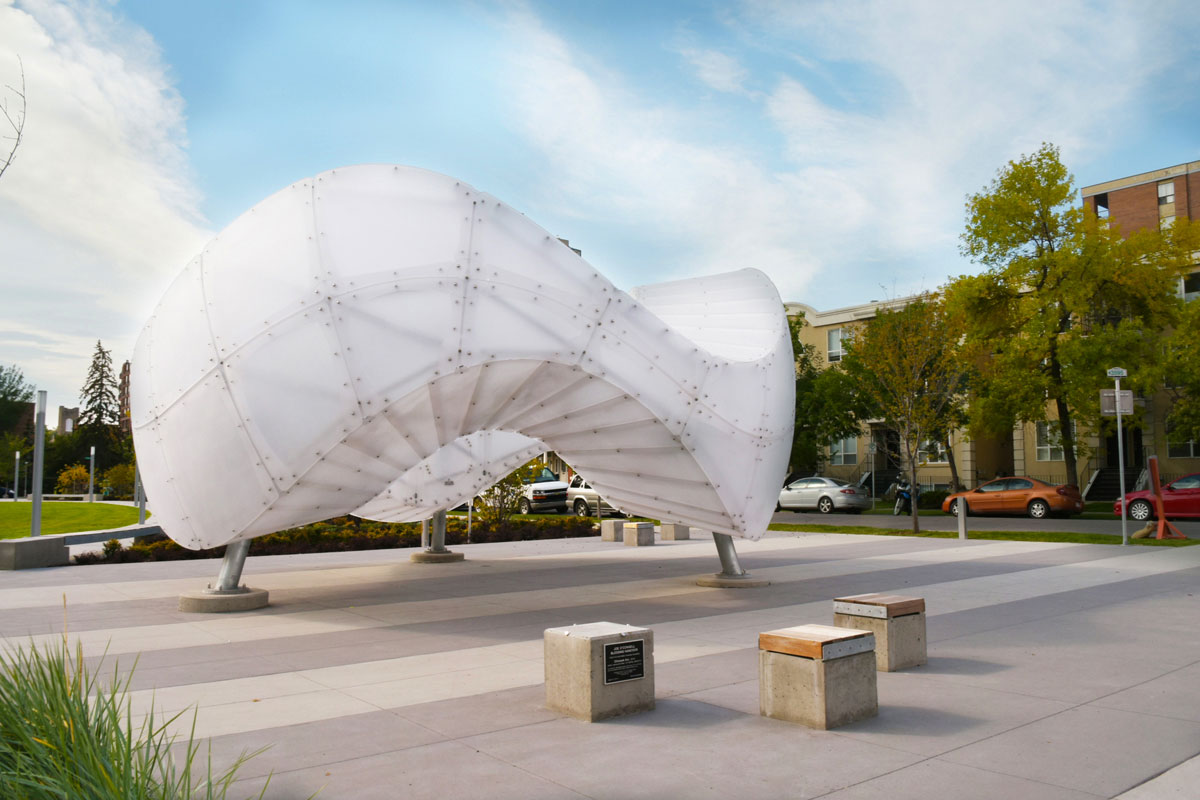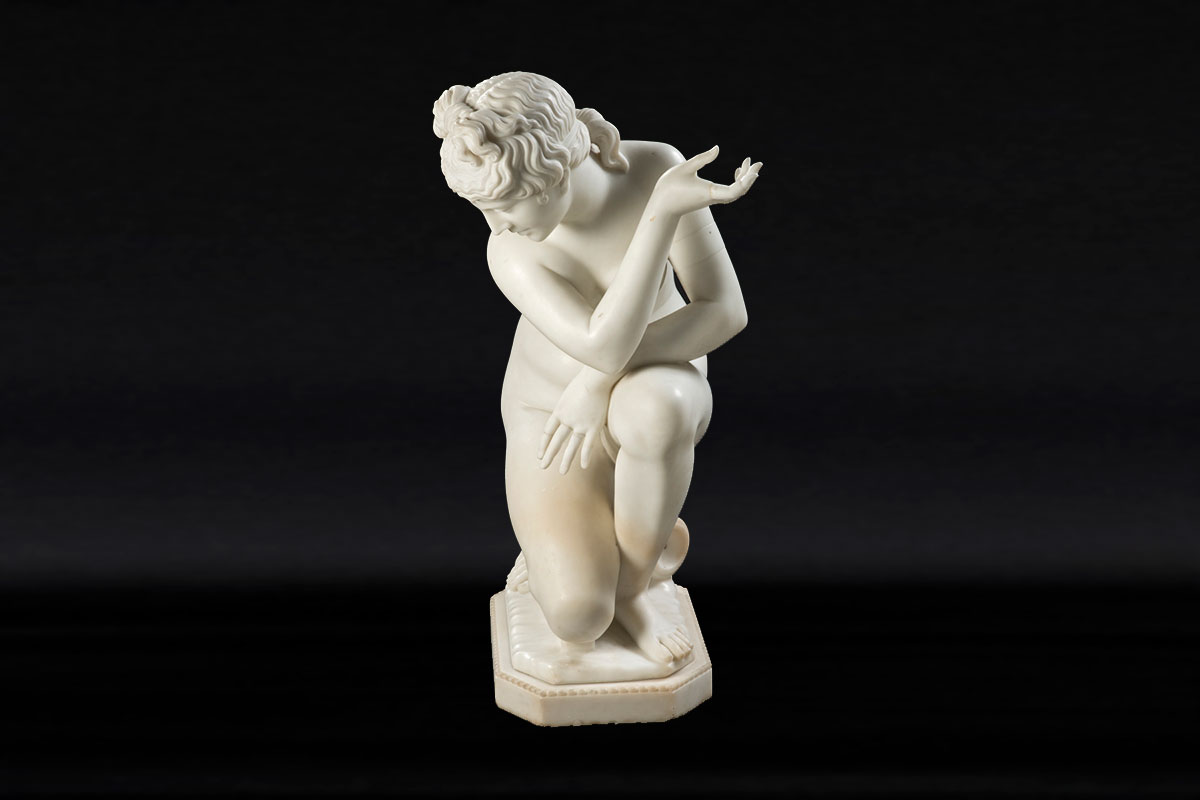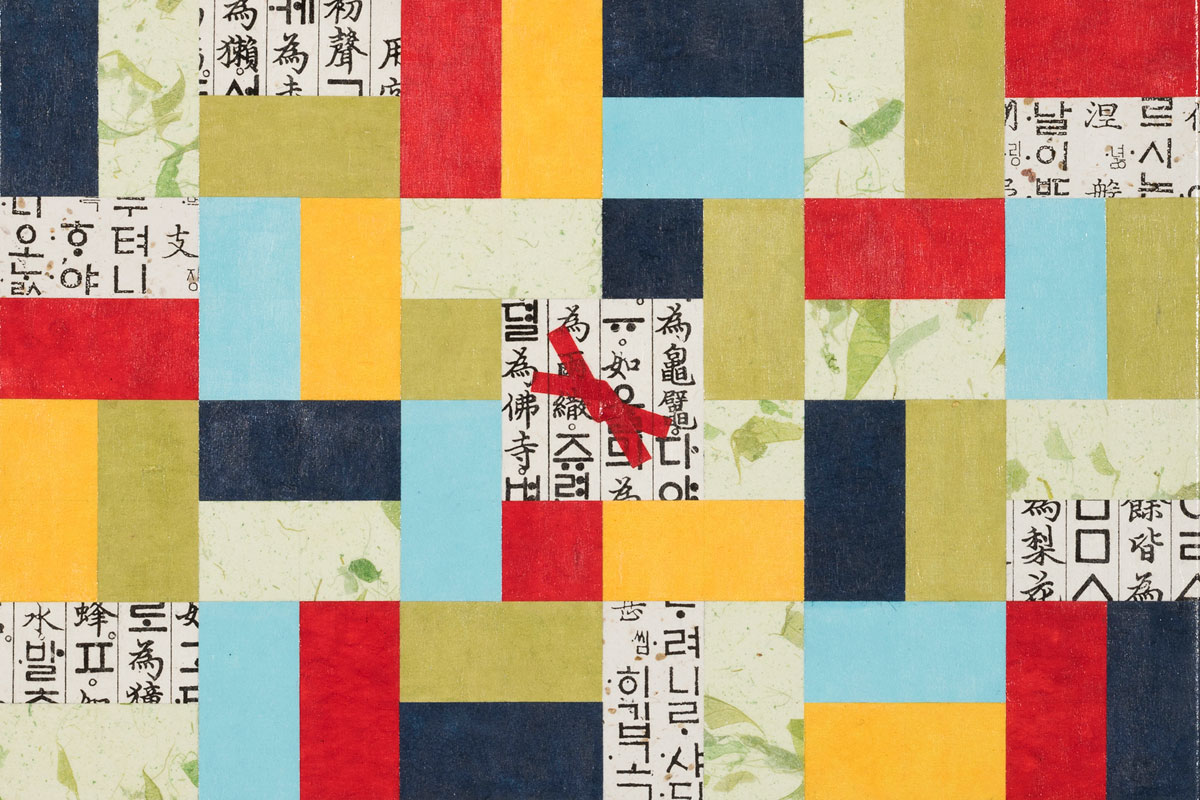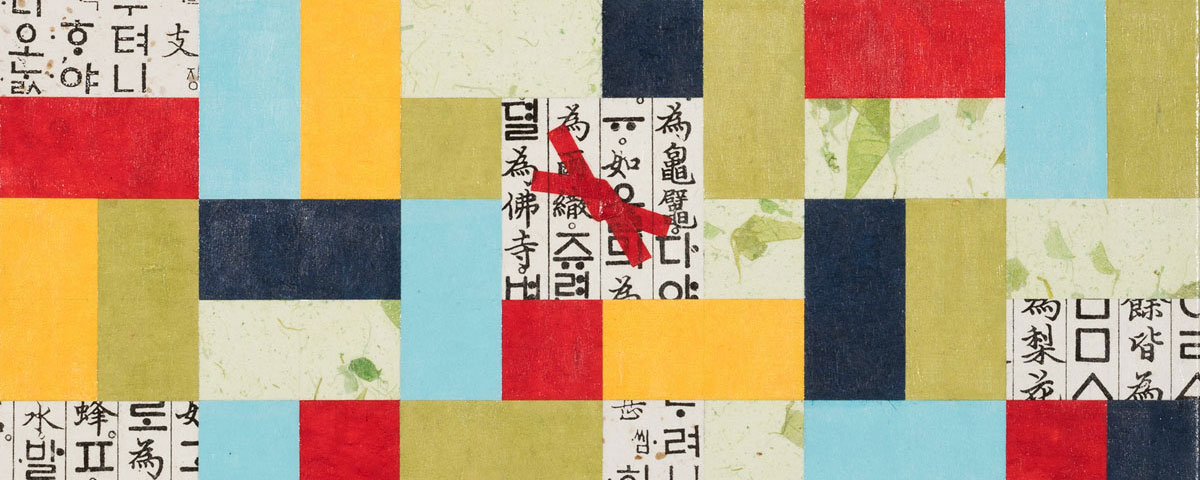Public Art Collection
Sell or donate artwork for The City's public art collection
Do you own a work of art you'd like to propose for Calgary's public art collection?
Read through the frequently asked questions Complete the online acquisition questionnaireWhere you can see the Collection
The City of Calgary’s Public Art Collection can be viewed in every ward across the city.
- Public art has been installed throughout the city for over one hundred years. Some of these pieces include the Centre Street Bridge lions, the Boer War Memorial in Central Memorial Park and the Brotherhood of Mankind downtown.
- New public art commissions have been incorporated into infrastructure such as LRT stations, recreation facilities, parks and fire halls.
- Photographs, paintings, textiles and sculptures are rotated throughout City spaces and public areas such as parks, plazas, recreational facilities, public buildings and in the Plus 15 network. This has been made possible through the Internal Loan Program.
- At any given time, approximately 80% of The City’s public art collection including permanent indoor and outdoor installations and utility box artworks are on free public display for all Calgarians to enjoy.
- We lend to public institutions like Bow Valley College, Mount Royal University, libraries across the city and Calgary Foundation. We also lend to galleries like the Glenbow Museum, The Nickle Arts Museum, the Whyte Museum and the Art Gallery of Alberta.
-
Moving toward reconciliation as a city, province and country requires showcasing art by Indigenous artists as a way of understanding and learning about the people who have lived in this region since time immemorial.

Chinook Arc, 2014 by Joe O’Connell and Blessing Hancock

Venus at Her Bath, 1850 by Artist Unknown

Chogak Colour 25, 2010 by Diana Un-Jin Cho
History of the Collection
Before there was a ‘percent for art’ funding strategy and a Public Art Collection, there was the Civic Art Collection which was managed and curated by the Calgary Allied Arts Foundation. The collection began growing with donations made as early as 1911. In 1946, the Calgary Allied Arts Foundation (CAAF), formerly the Calgary Allied Arts Council, was appointed trustee and steward of the Civic Art Collection. The Collection was supported by the passion and strong belief of a few early artists who believed that Calgary should acquire artworks of artistic and historical interest for the community. With funds from the bequests of Henry Bruce Hill, Wesley Fraser Irwin, Marion and Jim Nicoll, and Doug Motter, CAAF augmented the Collection through purchases, donations and commissions.
Roughly 80% of Calgary’s collection was built by the generosity of individuals, businesses and charitable organizations. People like Eric Harvie and his philanthropic organization, the Devonian Group gave and loaned to The City and its affiliates numerous artworks for places such as the Centennial Planetarium, the Devonian Gardens, Century Gardens, the Calgary Zoo and Heritage Park.
The City of Calgary assumed custodial responsibility for the collection in 1982, with the CAAF retained as an advisory committee on the development, maintenance, and promotion of the collection.
In 2004, when Calgary City Council approved the Public Art Policy, the Public Art Program assumed full responsibility for the administration and management of the collection. The Public Art Policy provides a sustainable and responsive ‘percent for art’ funding strategy for the acquisition, administration and management of public art. The City’s public art collection is the oldest public art collection in the province.
FAQ - Public art collection acquisitions
What is the vision, purpose, mandate, and shared values of the collection?
Vision
The City of Calgary’s public art collection exists for the people of the city and the Indigenous people who live in Treaty 7. It grows within a collective memory that contains the knowledge and shared experiences of art in the city by its people. The collection builds on the art of its time, embraces ambition, recognizes its history, and reckons with its colonial past. It engages art and ideas seeded in the land as well as beyond its own geographic boundaries. The collection contextualizes itself over time to weave together a narrative of art and place to be a marker of the deep-rooted history of this place, land, and the contemporary moment.
Purpose
The public art collection exists to:
- Foster, through experimentation and practice, the role of artists and public art in public space.
- Connect to and support living Indigenous knowledge and practices in this place now called Calgary.
- Share and further knowledge about contemporary art and Calgary art history
- Share and contribute to histories of the region.
- Explore and interrogate how contemporary issues and discourses affect citizenry, civic discourse and civic action.
- Actively encourage and support the self-determination and formation of communities of marginalized people. Be open to the redefinition of what and who constitutes “the public”.
- Support and represent a diversity of artists, practices, ways of knowing and worldviews that are reflective of those who live in Calgary and Treaty 7.
Mandate
The public art collection:
- Is a publicly accessible and publicly cared for art collection
- Is held in the public trust for the people of Calgary and Treaty 7 in perpetuity
- Acquires diverse artworks to achieve equity within the collection
- Stewards, researches, exhibits, and fosters connections to its content through ongoing interpretation, education, programming, etc.
- Supports artists’ research and multidisciplinary art practices
- Embraces holistic approaches to visual culture and cultural expression as practiced by diverse cultures
Shared values
The shared values help guide decisions and direction. Shared values come from the Benefits Driven Procurement, Public Art, and Indigenous Peoples report. These shared values of respect, communication and approach (access and openness) will be deepened and strengthened as time moves forward. Demonstrating integrity, looking to Indigenous knowledge for solutions to challenges, and participating with open minds and open hearts are all part of respect. The shared values are:
- Demonstrate integrity
- Recognize that everyone at the table has something to contribute
- Find common ground
- Amplify voices
- Look to Indigenous knowledge for solutions to challenges
- Open ourselves to receive the learnings and teachings and to be receptive to continued learning
- Participate with open minds and open hearts
I would like to propose a commission for the collection. What is the process?
Commission proposals are not accepted for consideration for the collection. Artists interested in creating an artwork for the collection should apply to public art opportunities as they are posted by Calgary Arts Development. Calgary Arts Development is responsible for public art programming while the care and curation of the collection remains with The City of Calgary.
How do I propose an existing artwork for the collection?
All potential acquisitions, purchases, donations / gifts / bequests / transfers from a City department, go through the same steps at the beginning of the acquisition process. If you have a work of art you would like The City to consider, please fill out the Proposed acquisition questionnaire and submit it to publicart@calgary.ca.
The questionnaire will help us determine if the public art collection is the right place for your artwork. If so, you will be asked to provide additional information as part of your proposal package.
Regarding proposed permanent public art sculptures, installations, or monuments on civic lands, it is important to understand that the Public Art program does not have jurisdiction over any civic lands and therefore cannot authorize the placement of proposed public art on civic property. Permission has to be sought from the City department responsible for the identified property or site, such as Parks, Roads, Facilities, etc. Public Art program staff may be able to assist you in determining the appropriate individuals to contact if you have certain sites in mind. Your Neighbourhood Partnership Coordinator (NPC) and Parks Community Strategist (PCS) are also resources available to assist you. Get in touch with them by calling 311.
If your proposal includes memorials or monuments, it must comply with The City of Calgary Parks Commemoration guidelines and with other related policies (see appendix B for links to policies). The work will also be assessed by the Naming, Renaming, Commemoration, and Removal handbook set out by Heritage Calgary. Additionally, the work may be reviewed by the Indigenous Knowledge and Heritage Sharing Circle. In general, memorials and monuments should:
- Recognize people or events deemed significant enough to merit such an honour;
- Commemorate persons deceased or retired and no longer active in their field for a period of at least five years prior to the creation of the artwork;
- Commemorate events that have occurred at least five years prior;
- Consider historical and community significance;
- Be located in an appropriate and relevant site for a memorial;
- Not negatively impact the public’s enjoyment, use or understanding of the place where it is located
- Understand any harm associated with the individual, event, or practice identified
- and is it celebratory of a perspective that does not appropriately acknowledge the harm?
Other criteria may also apply.
Who makes the decisions?
There are multiple professionals who give serious consideration to your proposed acquisition.
The completed Proposed acquisition questionnaire will be reviewed by the Public Art Curator. If the Public Art Curator has determined it meets the collection criteria, then the proposal will go to the curatorial panel.
The curatorial panel provides expertise to determine whether the proposed acquisition is in alignment with the Collection development strategy and considers all aspects of a proposed acquisition. Considerations include artwork’s artistic quality, lifecycle, potential impacts on pedestrian traffic, the relationship of the work to its proposed site, environmental concerns, cultural and historical context, spiritual significance, and whether it can be properly managed, maintained, and conserved within the City’s resources.
The curatorial panel is made up of members of the public and arts professionals and consists of entirely Indigenous and Racialized members with a minimum of 55% Indigenous representation. As required, technical advisors to the curatorial panel may include, but are not limited to, representatives from City departments and business units (such as Parks, Roads, Engineering, Heritage, and Archives), historians, art historians, curators, artists, conservators, Indigenous advisors or Traditional Knowledge Keepers, engineers, architects, and/or other subject matter experts. The curatorial panel also includes members of the Moh’kinsstis Public Art Guiding Circle. The Moh’kinsstis Public Art Guiding Circle works with the Public Art program so that appropriate approaches and protocols are followed as defined in their guiding principles.
Meetings of the curatorial panel recognize and respect Indigenous spiritual times as well as June 21, September 30, October 6, and 11. The scheduling also recognizes and respects non-Christian spiritual days and times.
The decisions of the curatorial panel are presented to the Moh’kinsstis Public Art Guiding Circle. Final approval is issued by The City of Calgary’s Arts and Culture division.
It is important to note that proposals for permanent public art sculptures, installations, or monuments must receive permission from the City department responsible for the identified property or site, such as Parks, Roads, Facilities, etc. If site permission cannot be obtained, the proposal will be declined.
How are decisions made?
There are a several factors taken into account when evaluating a potential acquisition. These factors may include, but are not limited to, the following:
- Alignment of the artwork with the collection vision, purpose, mandate and shared values.
- Appropriateness of the context if for a proposed site.
- Artwork’s compliance with the Collection Development strategy, Jack White Goose Flying report, Indigenous Policy framework, and other relevant City of Calgary public art collection policies and frameworks.
- Artistic quality of the artwork, including a strong concept or idea, outstanding technique or craftsmanship, and/or a clear understanding of design principles.
- Originality of the approach to the concept and/or medium.
- Authenticity and provenance.
- Potential, ability, and suitability to be exhibited in public space.
- Condition of the artwork and the ease of maintenance and conservation.
- Maintenance endowment, if applicable or required. These funds, which should be at least 10% of the total budget for the artwork, are used for the on-going maintenance of the donated artwork.
- Copyright and exhibition rights.
- Legality including ownership.
- For projects that include the installation of physical structures on civic lands, proposals will need to be reviewed and approved by relevant City business units with safety and maintenance in mind. Some projects may require a development or building permit and insurance.
An artwork that meets the above criteria may not be recommended for the collection if it:
- Has been altered from the time of its creation in ways that unacceptably compromise its integrity
- Cannot be documented, stored, preserved or protected adequately with the resources at hand or through additional resources made available along with the acquisition
- Requires excessive levels of management, conservation or care
- Poses an unacceptable threat to the health and safety of individuals
- Duplicates or very closely resembles another work already in the collection
- Is believed to be more appropriate for another institution’s collection
- Has an unverifiable provenance or if it is determined that the work was stolen or acquired under false pretense
- Has any conditions imposed upon it that constrains The City’s right to exercise full stewardship, care, use, management or disposition of the object
Factors not listed here may also apply, depending on the specific circumstance of the proposed acquisition and the nature of the work.
How long does the process take?
Every work of art added to the collection represents a significant commitment in resources, so each proposal is considered very carefully. The City needs to ensure that the work is a good fit with the collection and that there are enough resources to care for it. The length of the acquisition process will vary and depends on the time it takes to gather and evaluate all the relevant information about the work and its specific situation. The curatorial panel will convene twice a year to review acquisition proposals.
Can I make a monetary donation to the collection?
Yes. Monetary donations are greatly appreciated. You can give a gift of money alongside the proposed artwork. These funds may be used for costs associated with the artwork as well as for the ongoing care of the work. An amount of 10% of the value of the artwork is suggested for conservation and maintenance.
You can also make a monetary gift that The City can use to commission or purchase new works of art.
How is ownership transferred?
Initial acceptance of a proposed acquisition will be acknowledged through a written statement to the person donating, giving, transferring, or selling the work, or their agent. Final acceptance will be made by The City of Calgary once all the requirements outlined by the Public Art program have been met and will require an acceptance agreement. This agreement between The City and the donor or vendor will be prepared by the public art collections specialist and will reflect the particular circumstances of the acquisition. It will describe the terms and conditions under which the artwork is to be accepted, including responsibilities for installation, fabrication (if applicable), site preparation (if applicable), insurance, ongoing maintenance, conservation, informational signage, copyright, and so on. If the work is being purchased, the purchase price and terms of payment will be included in this agreement.
Also included in the agreement will be a statement that The City of Calgary retains full rights of removal, relocation, and deaccession (subject to review by the curatorial panel) of the artwork. The Public Art program seeks to ensure the ongoing integrity of the artwork and the site for which it was created, to the greatest extent feasible, in accordance with the artist’s original intentions. Documentation expressing the artist’s and the donor’s intentions will be collected at the time of acquisition and will become a permanent component of the artwork’s record. Please note that additional documentation may be required for final acceptance.
Required documentation must be completed within three months of the initial acceptance of the proposed acquisition, otherwise the proposal may be declined.
What about intellectual property rights/copyright?
In most cases, the artist who created the work of art will own the artwork’s copyright, even after the artwork has been transferred to The City of Calgary. At the time of acquisition, The City will enter into a written agreement with the artist or, if deceased, their representative, describing the extent to which The City may exhibit and produce images of the artwork. The City will obtain rights for its own purposes, at a minimum to study, exhibit, and reproduce the artwork for noncommercial use.
Can I set certain conditions on the artwork?
The City cannot accept any artwork that has conditions imposed upon it that constrain The City’s right to exercise full stewardship, care, use, management or disposition of the artwork.
Can you appraise my donation?
In order to issue a charitable tax receipt, The City must have an accurate monetary value for your donation. If your donation is valued at less than $1000, The City can provide an appraisal. For donations valued over $1000, The City will require an appraisal from a qualified third-party. Please note that donors are responsible for the cost of this appraisal.
Can you give me a tax receipt?
If you are donating a work of art to The City, it will be eligible for a charitable tax receipt. Note that there is a difference between a donation and a gift: while both processes involve the transfer of property without the exchange of funds, a donation is eligible for a tax receipt, while a gift is not. The City does not apply for the certification of cultural property and cannot assist in obtaining a tax receipt for cultural property.
Will you ever get rid of the artwork?
The City acquires temporary, semi-permanent, or permanent works of art with the ideal intent that they will always be in the collection for lifespan of the artwork. Because The City will care for the artwork in perpetuity, acquisitions are carefully considered before they are accepted. On occasion, it may be necessary to remove a work of art from the collection. This process is known as deaccessioning. There are strict deaccessioning procedures in place. In order to consider the deaccessioning of an artwork, one or more of the following criteria must be met:.
- Accidental loss or theft which can be verified and/or remains so for ten years.
- The artwork was damaged due to disaster, deteriorated beyond repair, or has been irreversibly vandalized and/or infringes on the artist’s moral rights.
- The artwork is hazardous to the Collection, staff or public (e.g., such as nitrate film or other unstable and dangerous materials).
- The material is duplicate, a reproduction or forgery.
- The artwork has conditions attached by the donor which the public art collection cannot or chooses not to fulfill, often due to a change in institutional resources.
- The artwork cannot be cared for adequately by the public art collection, perhaps due to limited and/or changing institutional resources including space requirements and staffing.
- The artwork ought to be transferred to another collection because it would be cared for and serve the public better as part of the other collection.
- The artwork has no relevant place or useful purpose within the current acquisition, exhibition or research practices of the public art collection.
- The artwork does not fit the collection’s vision, purpose, mandate and shared values.
- The artwork promotes hatred and/or incites violence against a particular group of people and this has been determined by experts/knowledge keepers of specific cultural histories and practices and is in keeping with the Universal Declaration of Human Rights, United Nations Declaration on the Rights of Indigenous Peoples, The Canadian Charter of Rights and Freedoms, and the Provincial and Territorial Human Rights Laws.
Criteria that primarily pertain to sited or integrated artworks:
- Endangerment of public safety.
- Excessive repairs or maintenance, or repair is not feasible.
- Public accessibility is no longer available.
- Demolition of a structure incorporating the Artwork or redevelopment of a site. incorporating the artwork.
- Expiry of lifespan of the artwork.
What if my proposed artwork is not accepted into the public art collection, but we still want to move forward?
If the curatorial panel declines a proposed artwork for the public art collection, it does not mean that you cannot proceed with your desire to commission or install a piece of public art. Artworks can be installed on City land with ownership and maintenance residing with community groups or community associations.
The artwork could still be installed on City (public) land if approved at the City management level, based on the following criteria:
- An organization commits to steward the artwork, and will take on responsibility for the insurance, maintenance, and conservation of the artwork for the duration of its intended lifespan.
- Site permissions are obtained from The City department responsible for the identified property or site.
- Documented citizen engagement has been done to demonstrate broad community support for the artwork (depending on the nature of the artwork, both community-level and city-wide engagement may be required).
- If the artwork is a memorial or monument, it complies with The City of Calgary Parks Commemoration guidelines and other related policies.
- The project team has the resources to hire public art consultants to direct curatorial decision-making, public engagement, design, preventive conservation, and quality assurance processes where required.
- Sufficient budget has been set aside to cover the costs of de-installation / decommissioning at the end of the artwork’s intended lifespan.
Copyright notice
All photos and images on our Public Art Program website are copyright protected. Please see our copyright notice for more information.


